

鸟应
Echoing Birds
2023.3.18 – 2023.4.23
艺术家:墨白
Artist: MO BAI
地址:北京市朝阳区酒仙桥路2号798艺术区中二街D06 Tong Gallery+Projects
Venue: D06, Middle 2nd St., 798 Art Zone, No. 2 Jiuxianqiao Rd, BJ
鸟应
文 / 阑珊公
墨白的绘画至少有三条线索可供我们品味——山水画,风景画与室内情境。这即诠释了艺术家的三重经历,少年入中国美术学院习中国画,成年后游历各国,并联合创办了新中式风格的家居品牌。展览题为“鸟应”,然而画中无鸟之形但有鸟之趣,可谓画外有鸟或鸟鸣应在观众心中。山水与花鸟是中国画恒久题材,前者是自然的风光,后者是自然的生命,两者状物陈情表意,一道构成了东方美的历程,展现于墨白的设画、用笔和表意中。
在中国古代,山水画与花鸟画均成型于唐(以题材作为画意主题出现而断),这就说明了此两类画材多少会共享着类似的经验:盛唐期间,海内外文化交流繁多,艺术已显包容气象;与此同时,受益于文人之于物质空间的精神需求,绘画的载体亦丰富起来,诠释了跨文化交流对于艺术转向的功能所在。西方风景画与中国山水画则有着不同立意,也即是“模仿自然(1)”与“表现自然(2)”之分,这两种方式带来了不同的空间感受。
空间就是理解第三条线索的关键视角。艺术的历程某种程度上可以看成是空间演变的历程,东西方绘画,均经历过从独立的陶器转向室内的过程(3),绘画至此成为空间的组成部分和视觉中心,有着相对固定的观看位置,也担负着更为重要的文化使命——无论从社会经济、精神构建,还是最为朴素的日常审美需要上。也因此,我们在室内赏鉴绘画时,无法将画面脱离周围的空间独立出来,也成就了观看绘画转向了对空间的体验。
画史演变一路而来,至墨白,依然寄兴笔墨,假道山林,值得关注的是她采用了综合性的实践方式来经营作品空间。首先,在画面内,墨白强调了作为主体的自然事物,但不强调表现空间感,如中国画中的平远,或西画中的单点透视,均鲜有表现。这种手法在唐代陕西地区壁画、后印象派,或张恩利等当代画家中可以看到影子。对空间氛围的创造,则侧重在画面外、但依然是画作一部分的画框上。这些画框经过精心设计,甚至转化成了颜料依附的底板本身,使得作品在不同的平面上呈现出多重空间:既有物质层面上的墙体、画框、画面、至观众所在的空间;也有意境层面的内心观照、窗外隐喻、画外声音所构成的空间。
展览现场设计与画框作为艺术家的意识透射,有意进行了呼应。一方面灵感来自于画框的起源——中世纪手抄本画家将教堂建筑设计元素作为边框绘制在书上;另一方面则于对现代美术馆绘画展流行的白色空间的反思——绘画何以回归日常,成为链接当代观众与窗外鸟应的通道。
(1) 15世纪佛罗伦萨画家阿尔贝蒂在《论绘画》中提出“模仿自然”,也构成了欧洲古典绘画理论的基础。这种再现自然的基本形式至19世纪末尚无明显变化。这种认识视角更强调从观者出发的一元认识。因为不强调通过自然风光表现画意主题,在19世纪前风景画一直作为次要画种存在。
(2) 中国山水对于自然的表现,不强调形似,也即是不强调模仿,而强调表现神韵或意境,以及对事理的揭示,到达人与自然的共鸣。如苏轼在《净因院画记》中提及“山石竹木水波烟云,虽无常形而有常理”。
(3) 如克里特到彩陶、仰韶彩陶上刻画了花鸟植物形象,西方在希腊罗马时期,东方在秦汉时期均转向了室内壁画,如庞贝壁画或汉画像石。
Echoing Birds
by Mr. Lanshan
Mobai’s paintings have at least three clues for us to appreciate – Shanshui paintings, landscape paintings and portrait d’intérieur. This explains the artist’s triple experience. As a teenager, she entered the China Academy of Art to study Chinese painting, and as an adult, she traveled around the world and co-founded a new Chinese-style home furnishing brand. The title of the exhibition is “Echoing Birds”, but there is no bird in the painting but a bird’s interest and charm. It can be said that there are birds outside the painting or the bird’s song should be echoing in the hearts of the audience. Landscapes and flowers and birds are the eternal themes of Chinese painting. The former is the natural scenery, while the latter is the life of nature. The two express feelings and meaning. Together they constitute the process of oriental beauty, which is displayed in Mobai’s design, brush and expression.
In ancient China, Shanshui painting and flower-and-bird painting were both formed in the Tang Dynasty (the theme appeared as the theme of the painting), which shows that these two types of painting materials share similar experiences: during the prosperous Tang Dynasty, there were many cultural exchanges at home and abroad. And art, at the same time, benefiting from the literati’s spiritual needs for material space, the carrier of painting has also been enriched, explaining the function of cross-cultural communication in the direction of art. Western landscape painting and Shanshui landscape painting have different ideas, that is, “imitation of nature(1)” and “to express nature(2)”. These two methods bring different spatial feelings.
Space is the key perspective for understanding the third clue. The process of art can be regarded as the process of spatial evolution to some extent. Both Eastern and Western paintings have experienced the process of turning from independent pottery to indoors(3) , so far, painting has become an integral part of the space and the visual center, has a relatively fixed viewing position, and also undertakes a more important cultural mission—whether in terms of social economy, spiritual construction, or the simplest daily aesthetic needs. Therefore, when we appreciate paintings indoors, we cannot separate the picture from the surrounding space, and it also makes the viewing of paintings turn to the experience of space.
The evolution of painting history has come all the way. Mobai still expresses her passion with brush and ink, pretending to be in the mountains and forests. It is worth noting that she has adopted a comprehensive practice method to manage the space of her works. First of all, in the painting, Mobai emphasizes the natural things as the subject, but does not emphasize expressing the sense of space, such as Pingyuan in Chinese paintings, or one-point perspective in Western paintings, which are rarely expressed. This technique can be seen in murals in Shaanxi in the Tang Dynasty, Post-Impressionists, or contemporary painters such as Zhang Enli. The creation of space atmosphere focuses on the frame outside the picture but still a part of the painting. These picture frames have been carefully designed, and even transformed into the base plate itself attached by the paint, so that the work presents multiple spaces on different planes: there are walls, picture frames, pictures on the material level and the space where the audience is. At the same time, a space composed of inner observation at the level of artistic conception, metaphors outside the window, and sounds outside the painting.
The design of the exhibition site and the picture frame, as the transmission of the artist’s consciousness, intentionally echoed. On the one hand, the inspiration comes from the origin of the picture frame – medieval manuscript painters drew the architectural design elements of the church as a frame on the book. On the other hand, it comes from the reflection on the white space popular in the painting exhibition of modern art museums – how painting returns to everyday life, becoming a channel linking contemporary audiences with bird responses outside the window.
(1) The 15th century Florentine painter Alberti proposed “imitation of nature” in “On Painting”, which also constitutes the basis of European classical painting theory. This reproduction of nature The basic form of the painting has not changed significantly until the end of the 19th century. This perspective of understanding emphasizes the one-dimensional understanding starting from the viewer. Because it does not emphasize the expression of pictorial themes through natural scenery, landscape painting has always existed as a secondary painting before the 19th century.
(2) Chinese landscapes do not emphasize similarity in shape, that is, imitation, but emphasize the expression of charm or artistic conception, and the revelation of things to achieve the resonance between man and nature. For example, in Su Shi’s “Net Cause It is mentioned in “Paintings of the Courtyard” that “mountains, bamboos, trees, water, waves, smoke and clouds, although impermanent, have common sense.”
(3) Such as Crete to painted pottery, Yangshao painted pottery depicting images of flowers, birds and plants, and Western During the Greco-Roman period, the East turned to indoor murals during the Qin and Han dynasties, such as Pompeii frescoes or Han stone reliefs.
展览现场
Exhibiton View
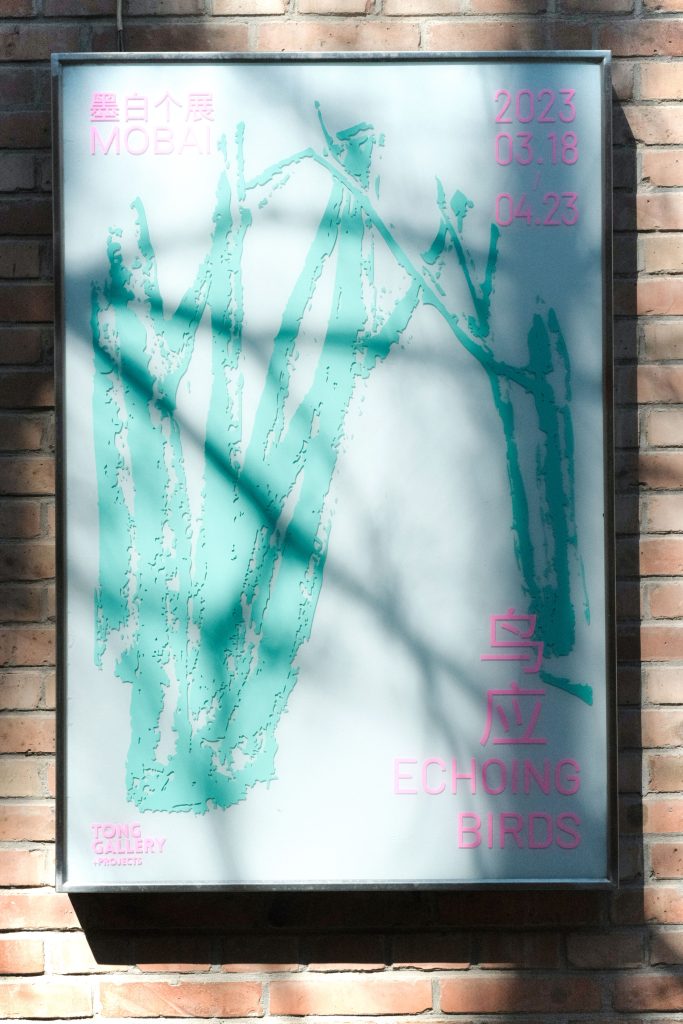
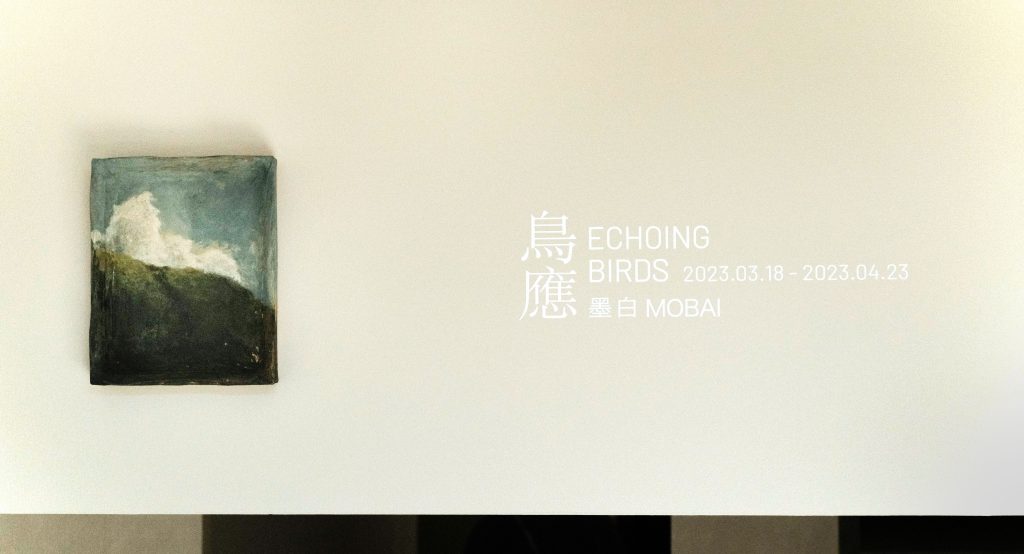
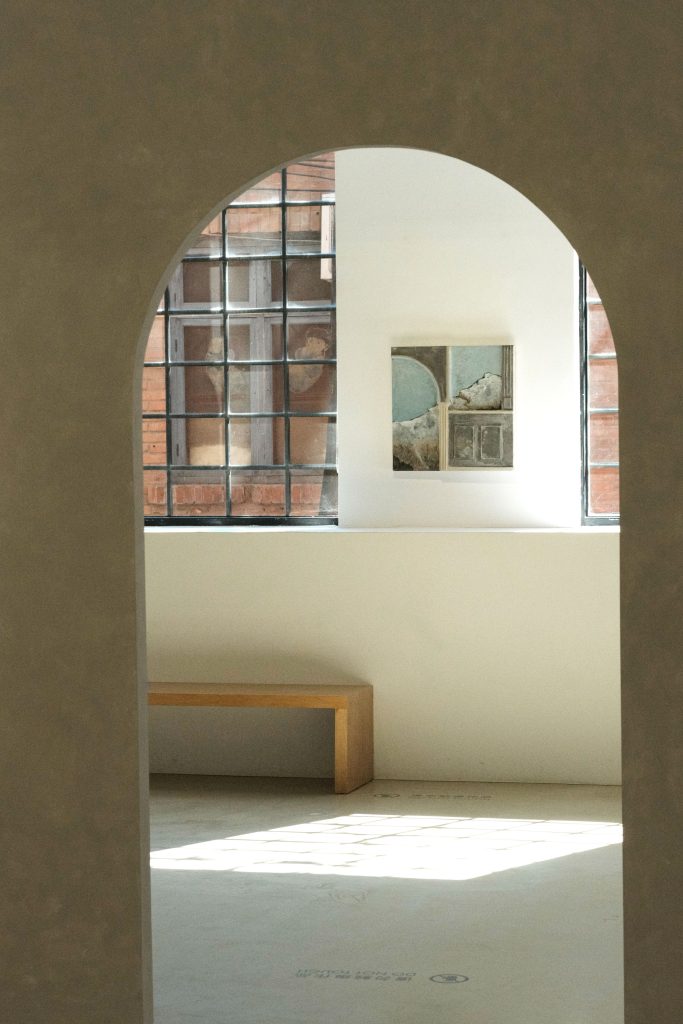
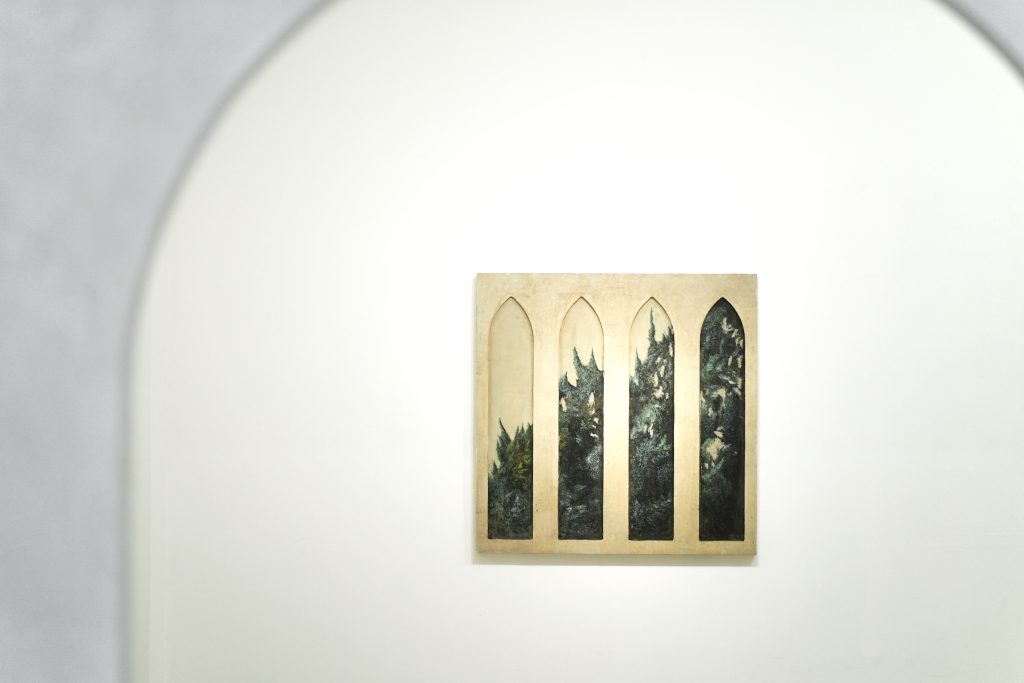
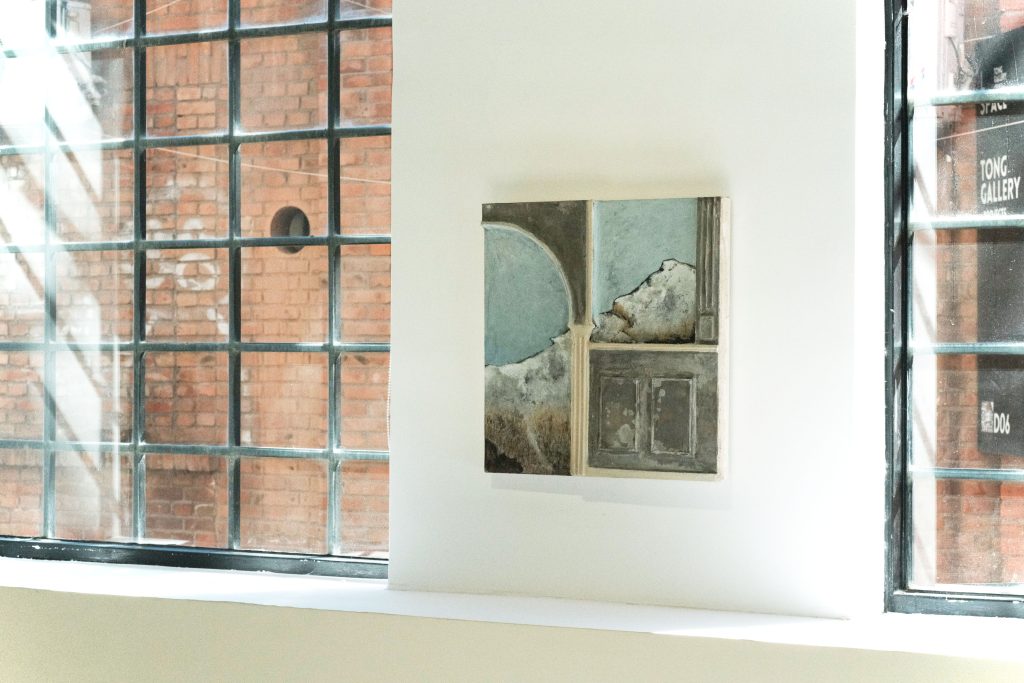
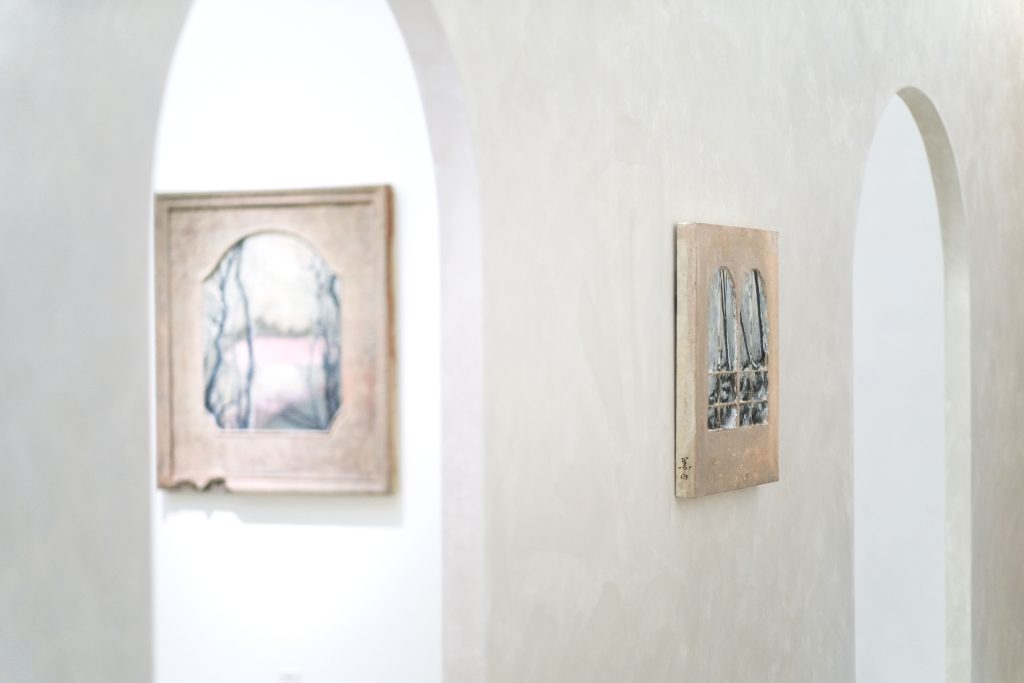
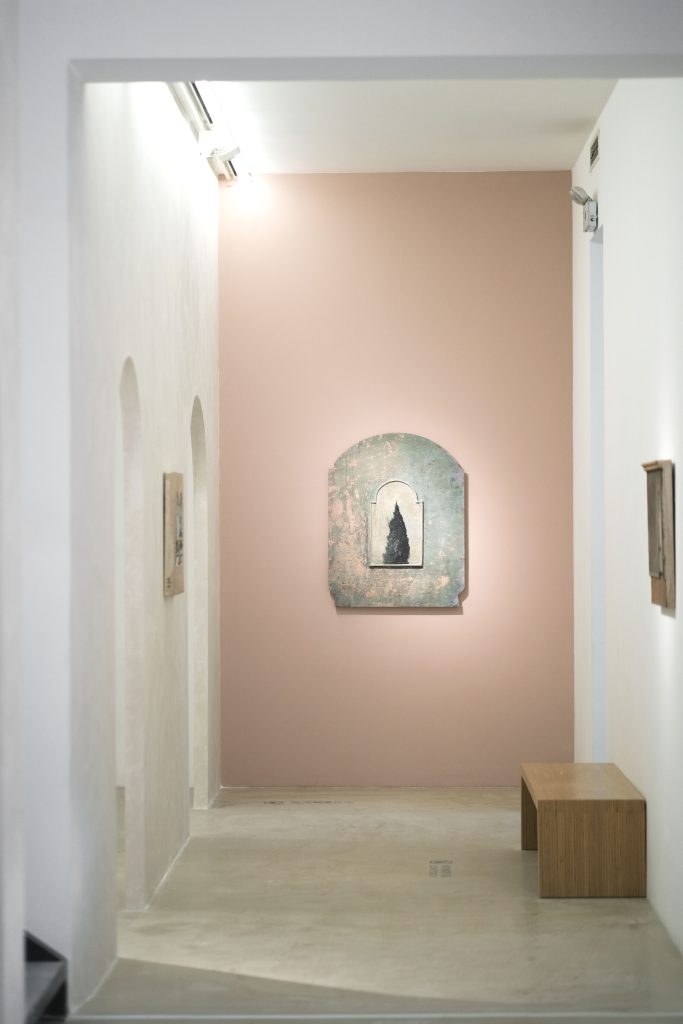
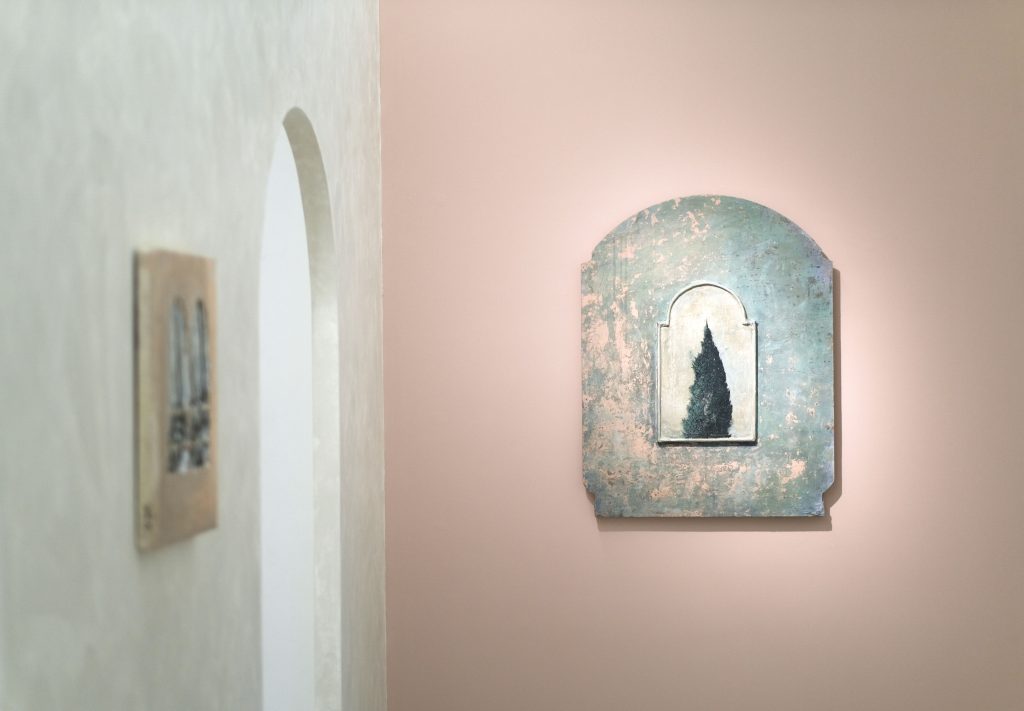
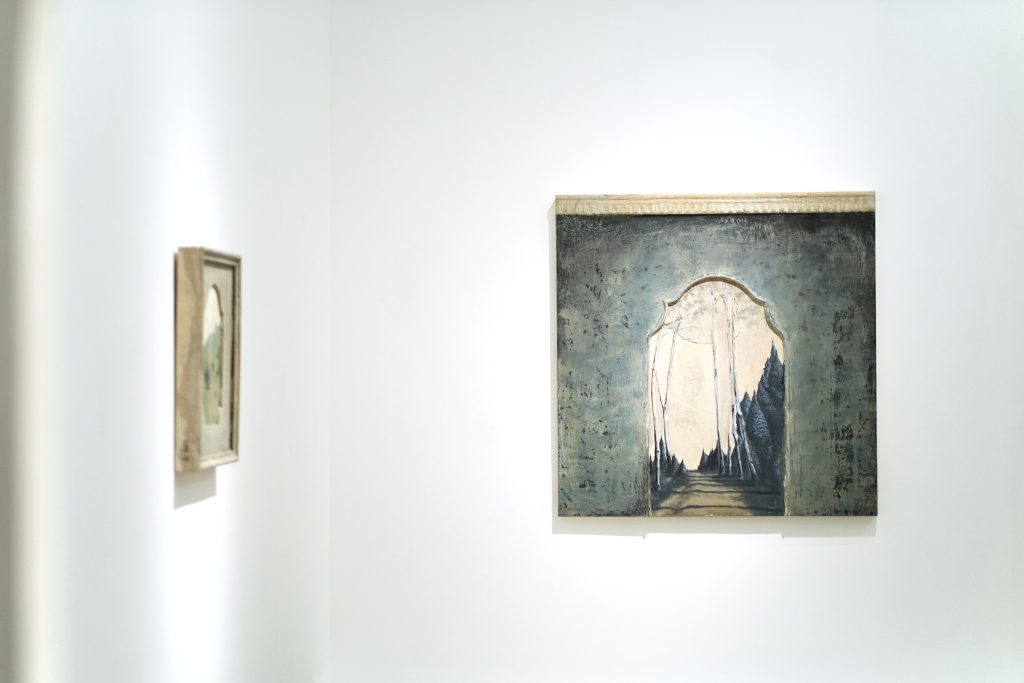
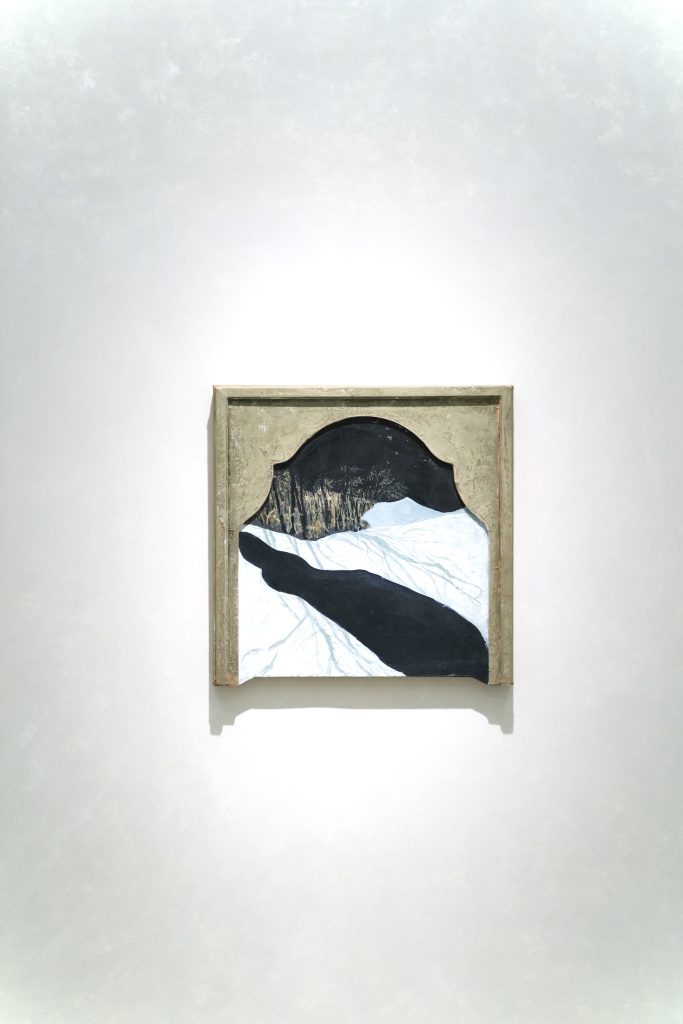
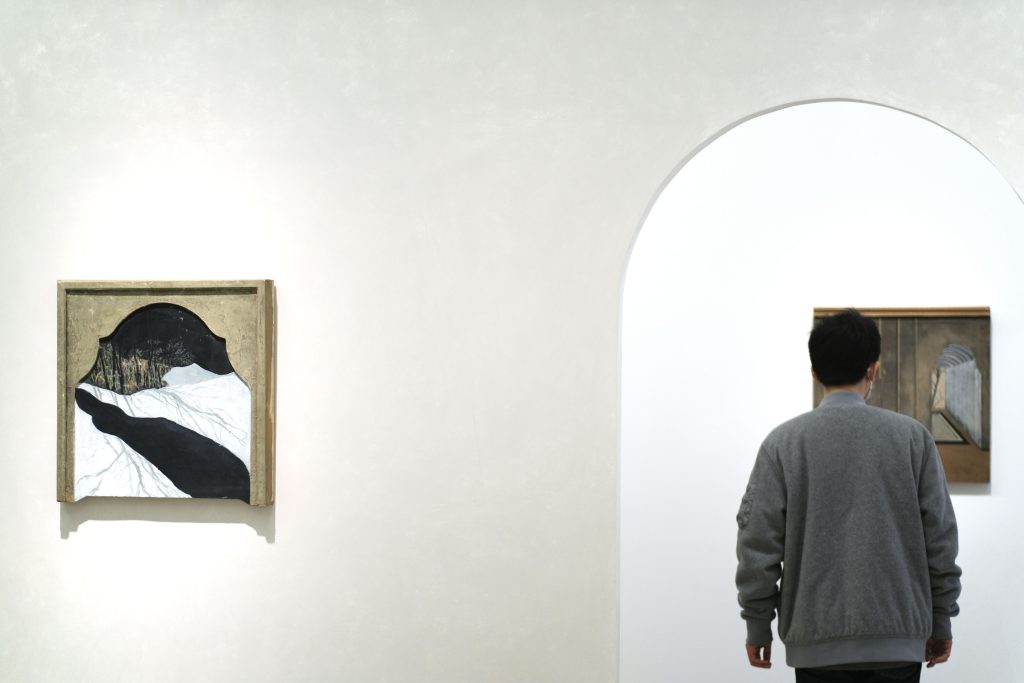
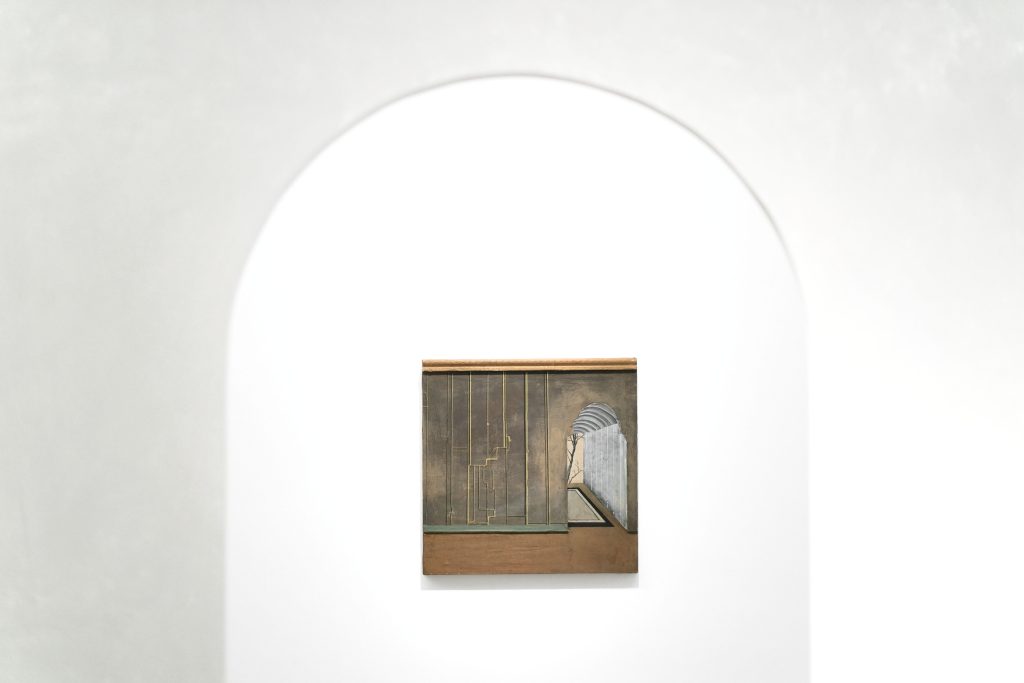
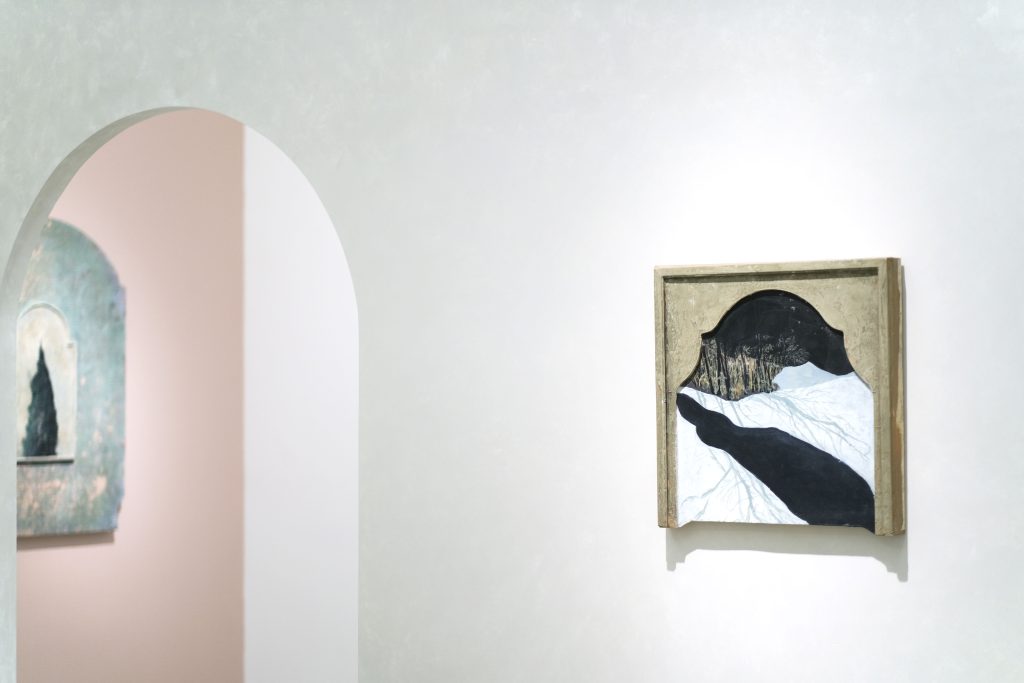
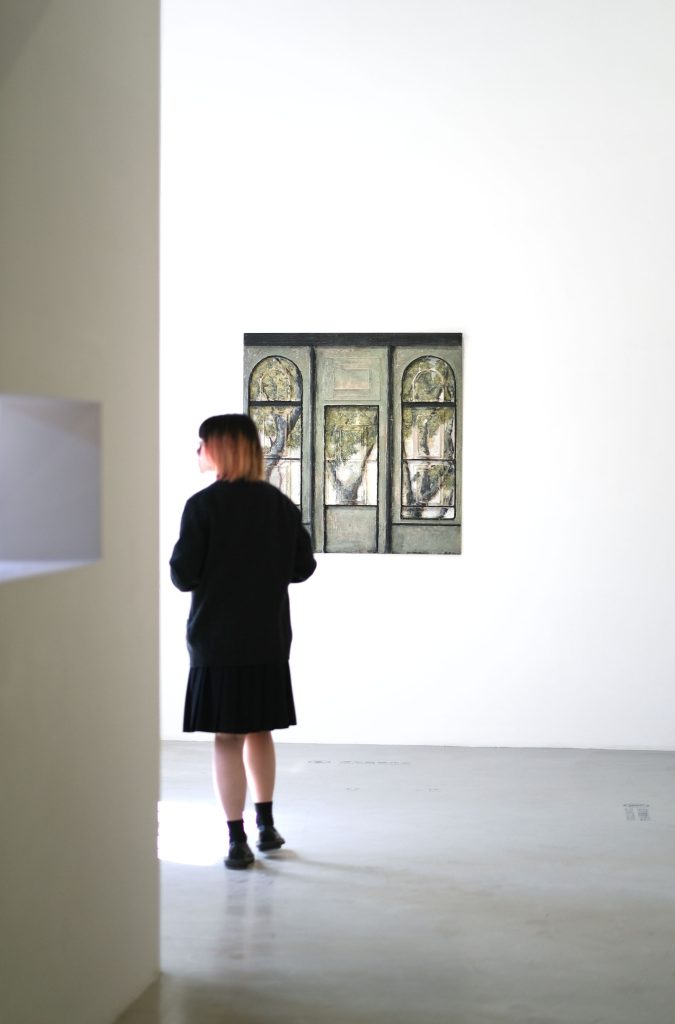
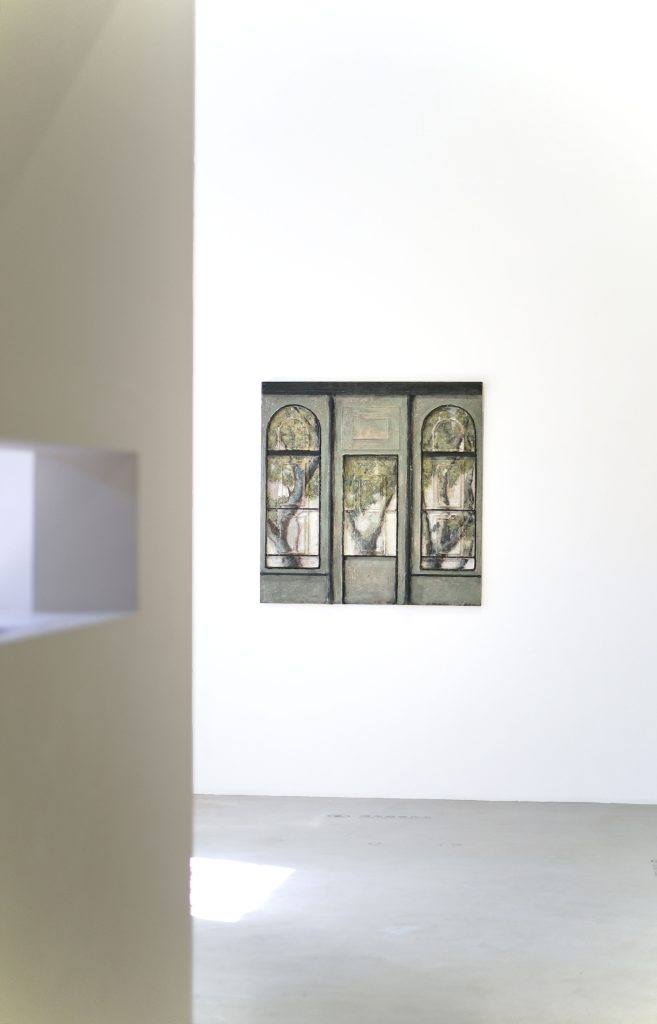
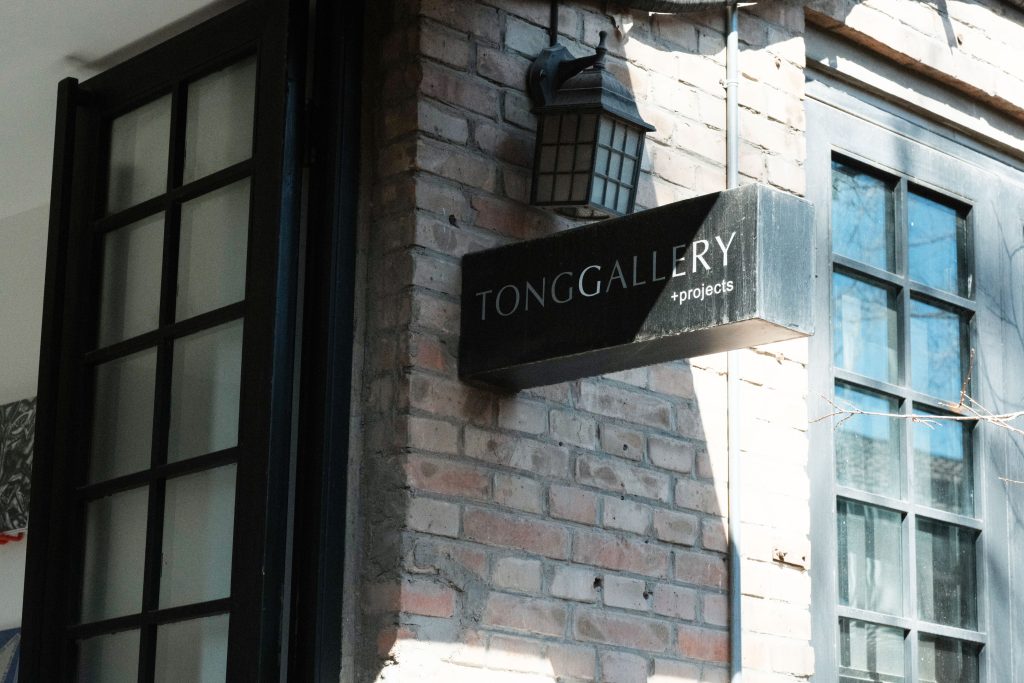
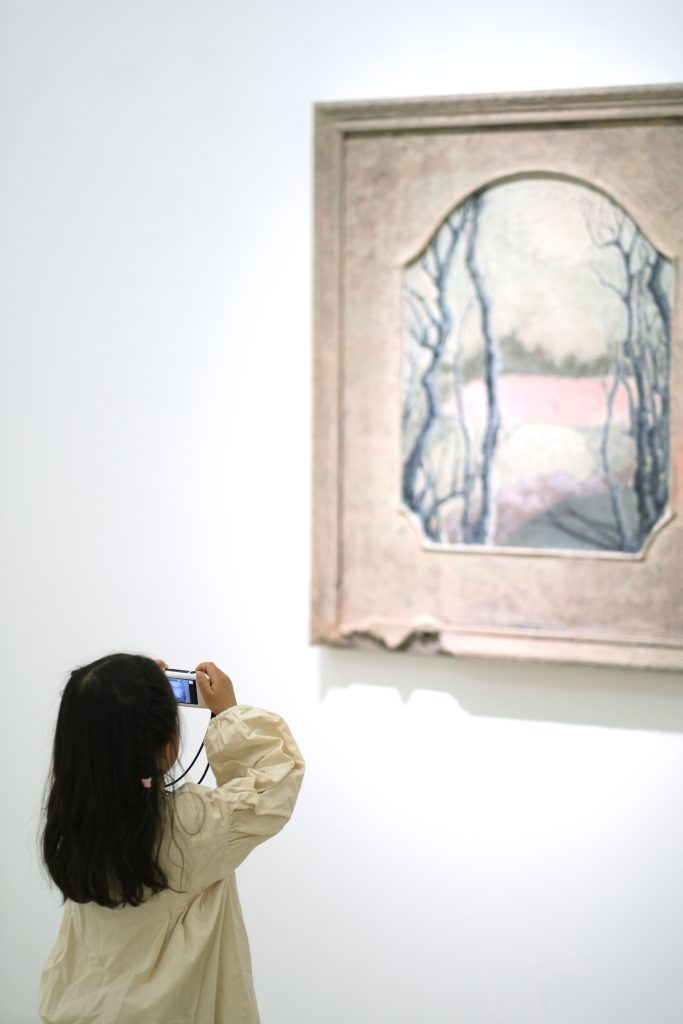
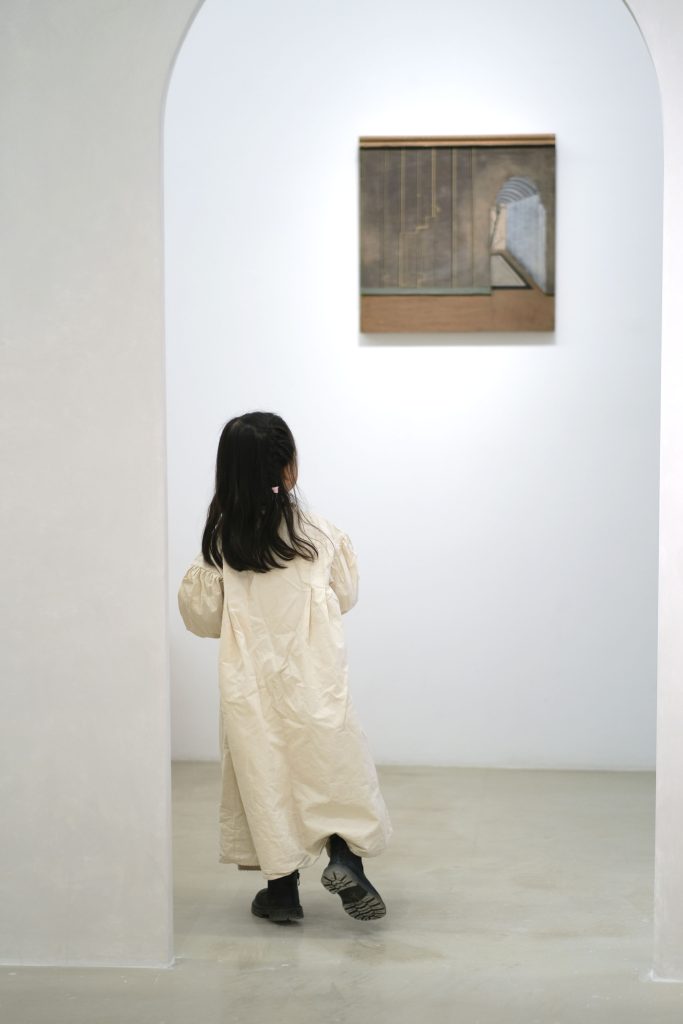
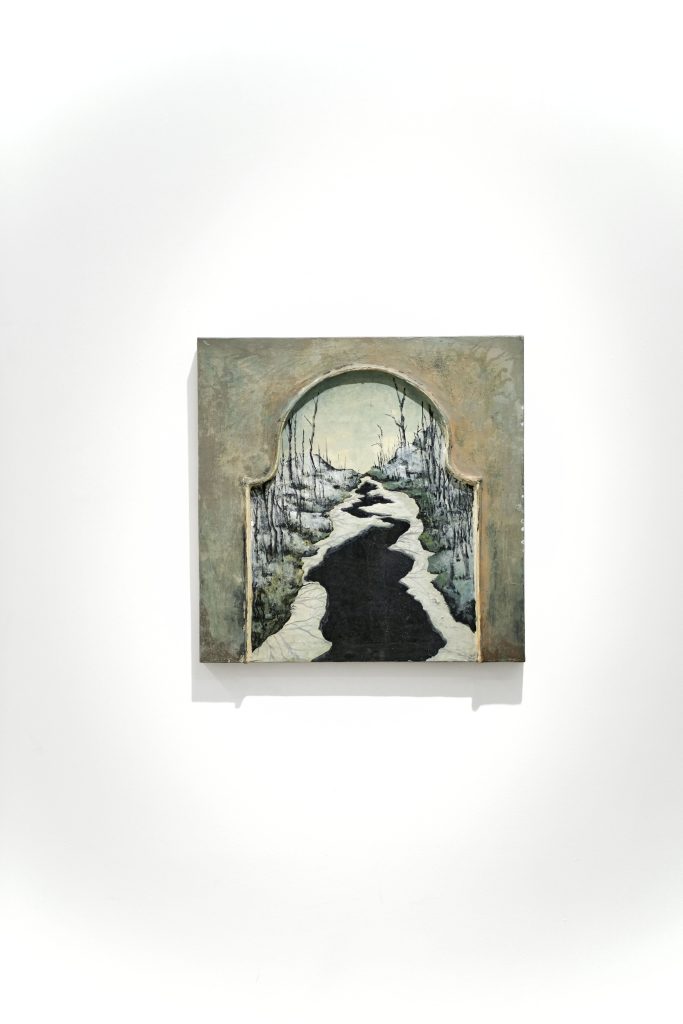
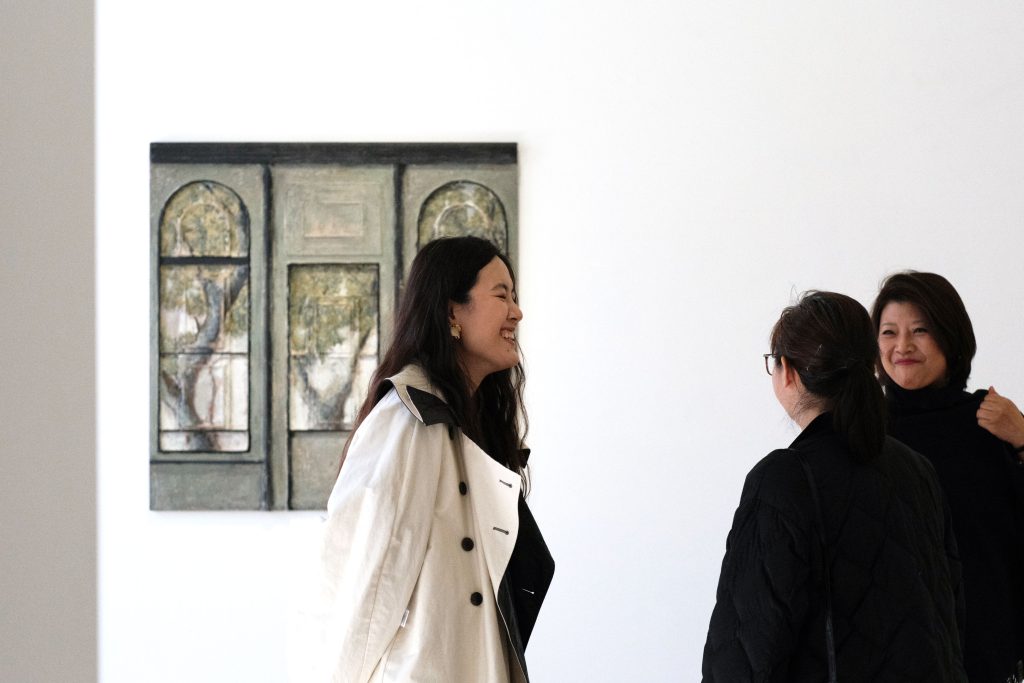
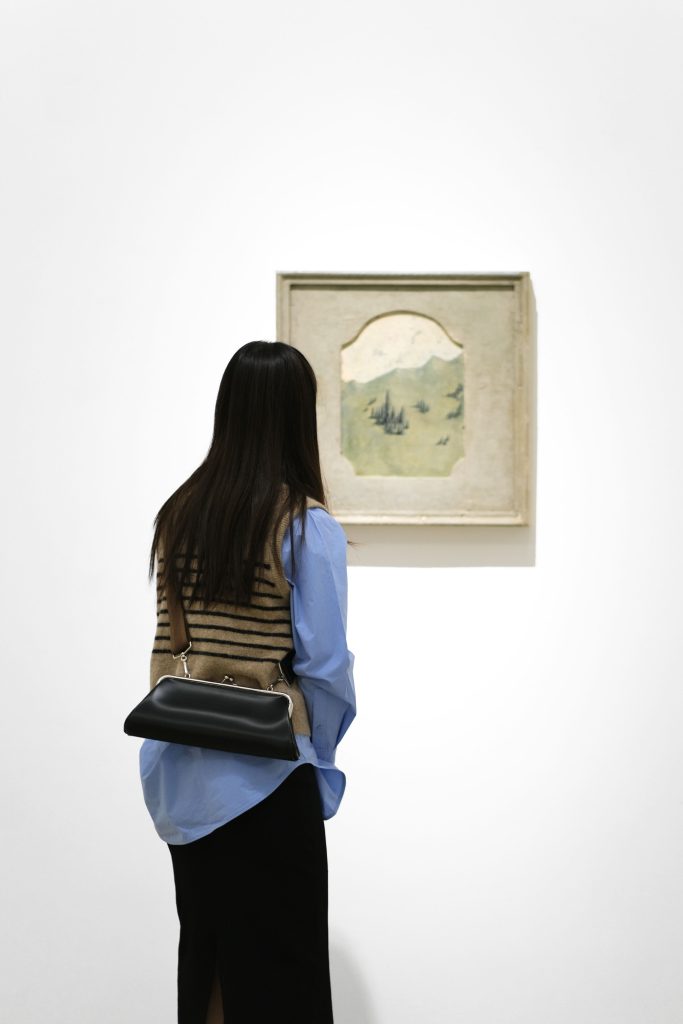
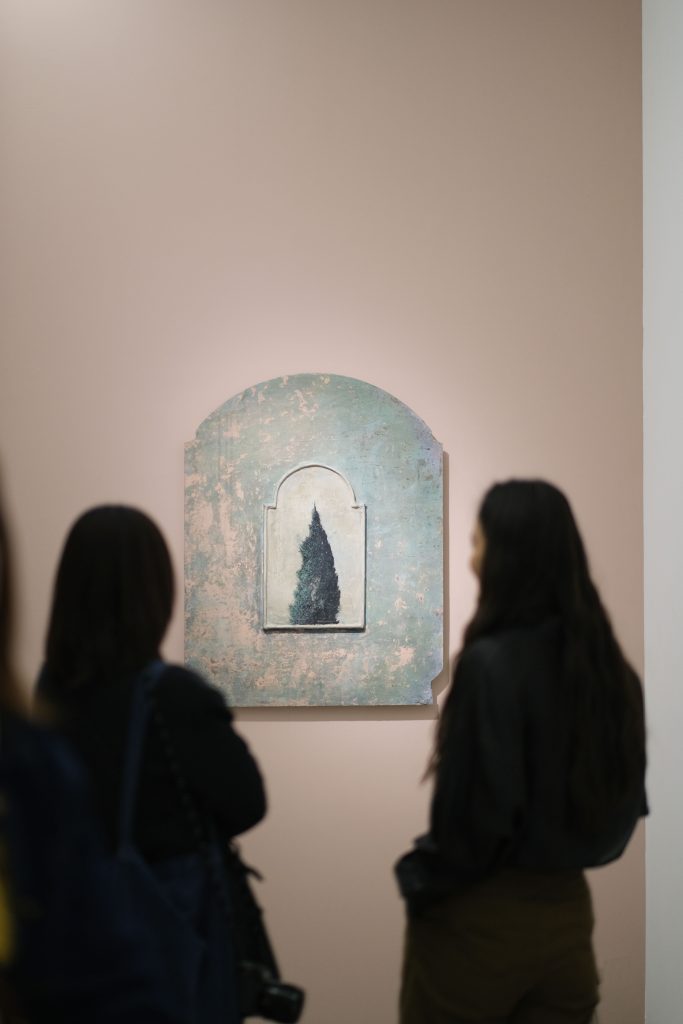
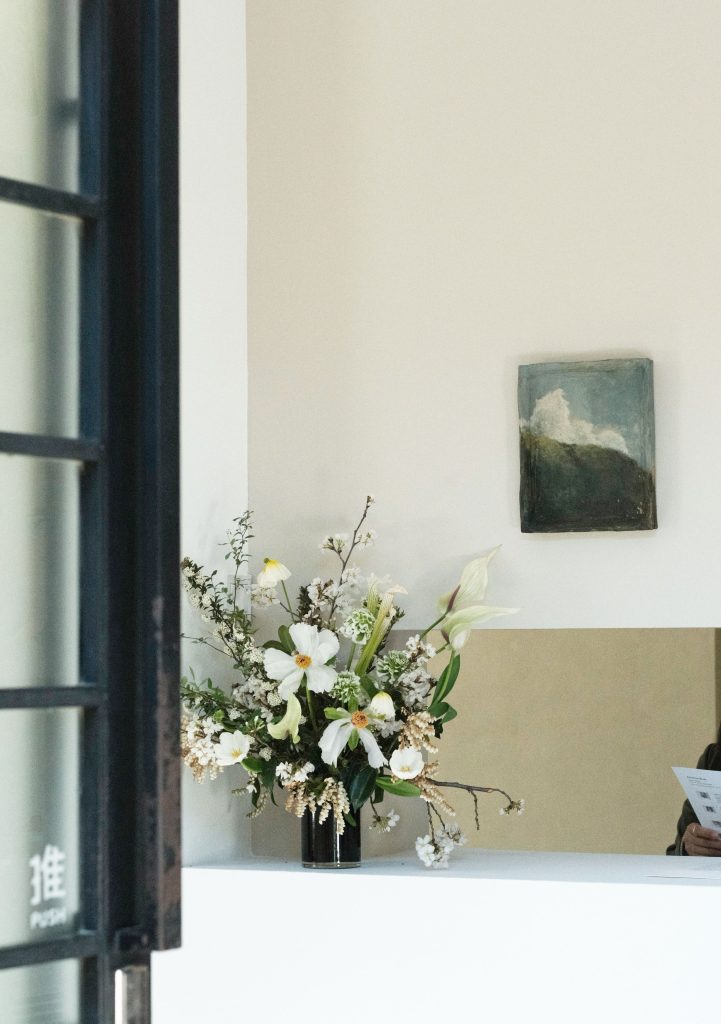
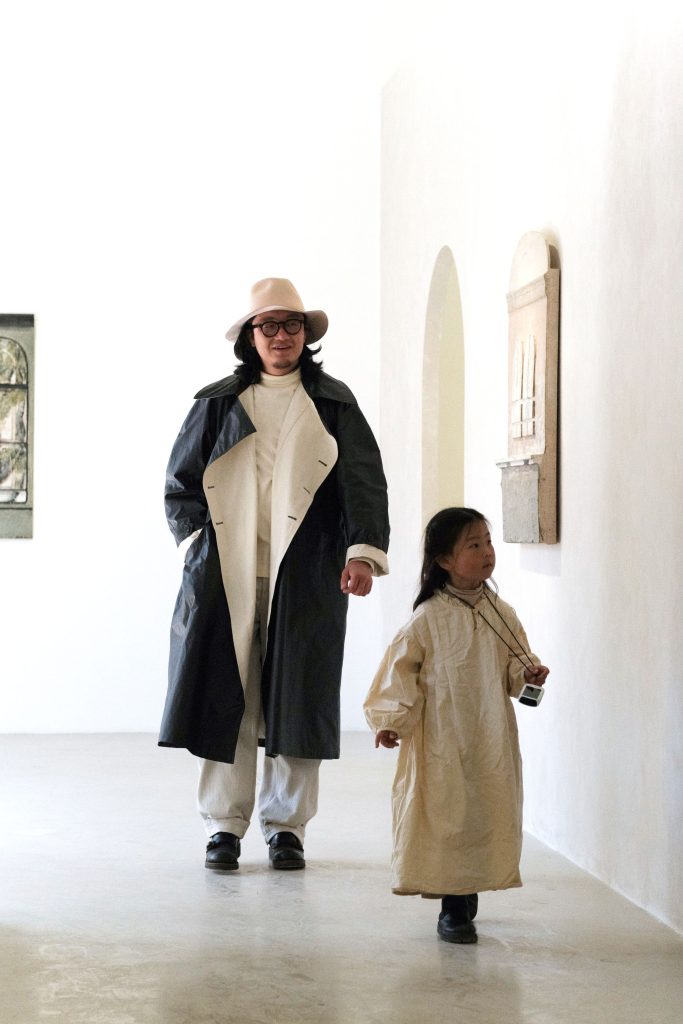
关于艺术家
Artist

墨白 Mobai
中国福州出生。毕业于中国美术学院国画系花鸟专业。现在居住在中国北京和日本伊豆。
个展
2022 《在失色的诸神之间》(oniment,上海)
2022 《輕寒 • 染梢》(香港)
2022 《听听》(北京)
2022 《穹顶之下的回荡》 (san gallery,台北)
2021 《靜隅》 (台北)
2021 《在場》 (西安)
2021 《Beautiful Dream》(hanky department store art gallery, 大阪);
2020 《View》(Galeriewa2, 东京)
2020 《迹:片刻之外》 (线上)《在場》 (上海、北京)
2019 《生之曠野》 (梵几,成都)
2019 《迹》 (元白,杭州)
2017 《蒸发》 (梵几,北京)
2018 《蒸发·海边特展》 (阿那亚,北戴河)
2016 《半山伏线》 (元白,杭州)
2015 《邊藍》 (梵几,北京)
2009 《着华服的鸟》 (福州)
群展
2022 《ART021》(上海)
2022 《2022 台北國際藝術博覽會 / ARTNUTI GALLERY》(台北)
2022 《新竹艺术博览会》(台中)
2022 《好奇无界·米奇艺术展全球巡展 / UCCA》(深圳、北京)
2022 《Oh My MUSES! 亚洲当代艺术家联展》(台中)
2022 《one art Taipei 藝術台北》(台北)
2021 《 未知地带》(可见光,上海)
2017 《因为所以- WOW当代女性艺术家联展》(北京)
Mobai.
Born in Fuzhou, and currently residing in Beijing, China and Ito, Japan.Graduated from China Academy of Art, majoring in Chinese Painting.
Solo Exhibitions
Fluttering among the Gods (Shanghai 2022)
slightly cold, colored the branch (Hong Kong 2022)
Listen (Beijing 2022)
Echoes under the dome (Taipei 2022)
A Silence View of Corner (Taipei 2021)
Vita with A View (Xi’an 2021 )
Beautiful Dream: Yuta Nishiura x Mobai (Osaka 2021)
View (Tokyo 2020)
Vita with A View (Shanghai/Beijing 2020 )
Signs: a Parallel Moment (online 2020)
Wilderness of life (Chengdu 2019)
Evaporate · Special Exhibition (saffeon sea 2018)
Signs of inner world as outer space (Hangzhou 2019)
Mountains on the horizon (Hangzhou 2017) Evaporate (Beijing 2017)
Edge of blue (Beijing 2015)
Birds dress in finery (Fuzhou 2009)
Group ExhibitionsART021 Shanghai(Shanghai 2022)
ART TAIPEI 2022 / ARTNUTI GALLERY (Taipei 2022)
Art Shinchu (Taichung 2022)
Ever-curious · MICKEY the true original exhibition(UCCA, Shenzhen/Beijing 2022)
Asian Contemporary Art Group Exhibition(Taichung 2022)
One art Taipei (Taipei 2022)
Unknown Zone (Shanghai 2021)
Women of the world: a exhibition of contemporary Chinese female artists (Beijing 2017)

Comments (0)